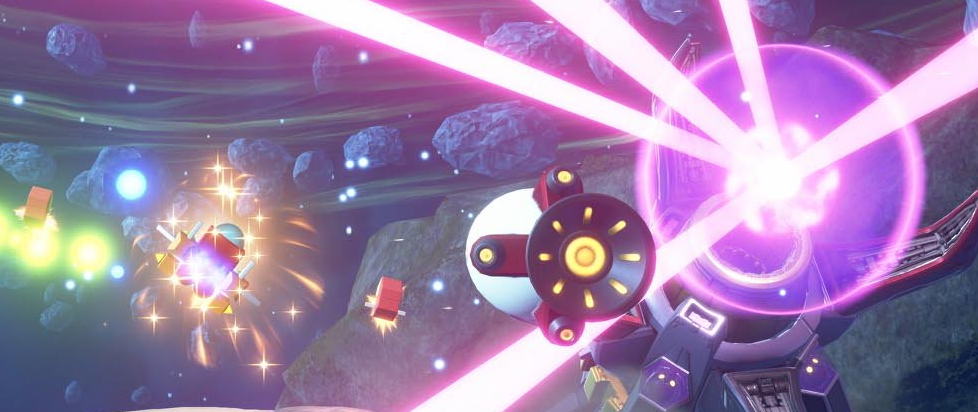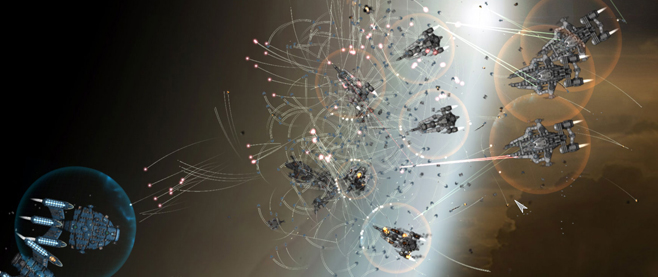
The Shonen Flowmotion of Kingdom Hearts III
There’s little doubt in anyone’s mind how much the Kingdom Hearts series apes from anime. Whether it’s through the increasingly convoluted plot points or the idiosyncratic character designs, Kingdom Hearts wears its anime influences on its sleeves. But one underrated aspect of Kingdom Hearts that nevertheless remains front and center is in the action, which is increasingly reliant on midair battles that seemingly defy gravity. That’s no accident, as this particular brand of action mimics the very best of shonen anime like Dragon Ball Z, turning the action into a grand, frenetic spectacle. Kingdom Hearts III’s Flowmotion system is the ultimate apotheosis of that trend.
Shonen anime’s most distinctive feature is its focus on action, with increasingly powerful characters clashing with each other. For many of these shows, the characters’ power levels are reflected by their ability to float in mid air seemingly indefinitely, giving everything a superhero feel. You can see this in the aforementioned Dragon Ball Z and Bleach, where the further forward you go in the series, the more you see fights taking place in the air, with the most intense ones almost exclusively made up of scenes where characters are bouncing into and off of each other, landing blow after blow without ever touching the ground.
These fights also feature one other important element: They’re hyper-focused on the combatants throughout most of the proceedings. Of course it’s natural for a show to put the focus on its protagonist and antagonist, but the way they fight behaves like they’re magnets, where they’ll bounce off each other a lot. Even though it will look like both parties are utilizing a lot of speed, they’ll inevitably clash into each other again. And the fights tend to create their own “spaces”. Regardless of how much the fighters move, the fight remains squarely in focus. The result is that the fighters don’t change location so much as the location changes around the fighters.
Kingdom Hearts always was a series that traded on utilizing the third dimension better than its contemporaries, tossing platforming elements into the mix and making environments wonderfully interactive and open. Just look at how vertical Wonderland from the original Kingdom Hearts felt to play around in. And with Kingdom Hearts III (and Kingdom Hearts: Dream Drop Distance before it), main character Sora’s movement has been dubbed the “Flowmotion” system, which lets you zip around the levels with easy, interact with the environment as you move, and even run up walls. It’s a fancy name for a nebulous concept that Kingdom Hearts has been building on since the very beginning: freeform movement in huge levels focused on combat with enemies.
What’s more important, though, is how tightly you lock on to an enemy when you draw near to one. As long as you’re within a generous distance to the enemy, you’ll zoom straight to it should you hit the attack option. This way, you’re always engaged with the enemy as the screen focuses on your fight, just like in shonen anime. The slingshot effect of closing the distance from just a single attack mirrors the bouncing off of each other two fighters do in anime perfectly. And the speed at which you move around the battlefield contributes to this feeling as well. The extra environmental stuff you can do with Flowmotion, like running up walls, allows you to actually fight enemies while running up said walls, giving those particular encounters the rush of something like a Naruto fight scene.
But the most effective showcases for Kingdom Hearts’ shonen movement is in the one-on-one end boss fights that always cap off the experiences. Each one is an exhilarating trading of blows and clashes with an evenly matched rival, most of which will inevitably take to the skies. Kingdom Hearts III’s Armored Xehanort fight illustrates the mushy sense of place that happens in high-stakes shonen fights. There’s very little stable ground to stand on, and the environment around you actually rotates as you fight like the surface of a Rubik’s Cube. You can land on something solid, but with as fast as Xehanort goes, you’ll spend most of the fight in midair, which is also where the slingshot effect of lock-on happens. What you end up with is a fight straight out of Dragon Ball Z, where you’re bouncing off each other at supersonic speeds. You can barely follow the action, but that’s okay, because that’s exactly what you want out of a fight like this.
You end up with something that even the excellent Dragon Ball FighterZ doesn’t accomplish: The exhilarating feeling that you’re fighting in a shonen anime, the key focus on “you” here. While games have certainly echoed the style of shonen in set dressing and character design, the action was always a compromised approximation of the sheer spectacle of that style of fight. Though it certainly falters as a pure action game, Kingdom Hearts III succeeds at making you feel like a badass in the shonen tradition, nailing the adrenaline rush and putting you into the driver’s seat.





